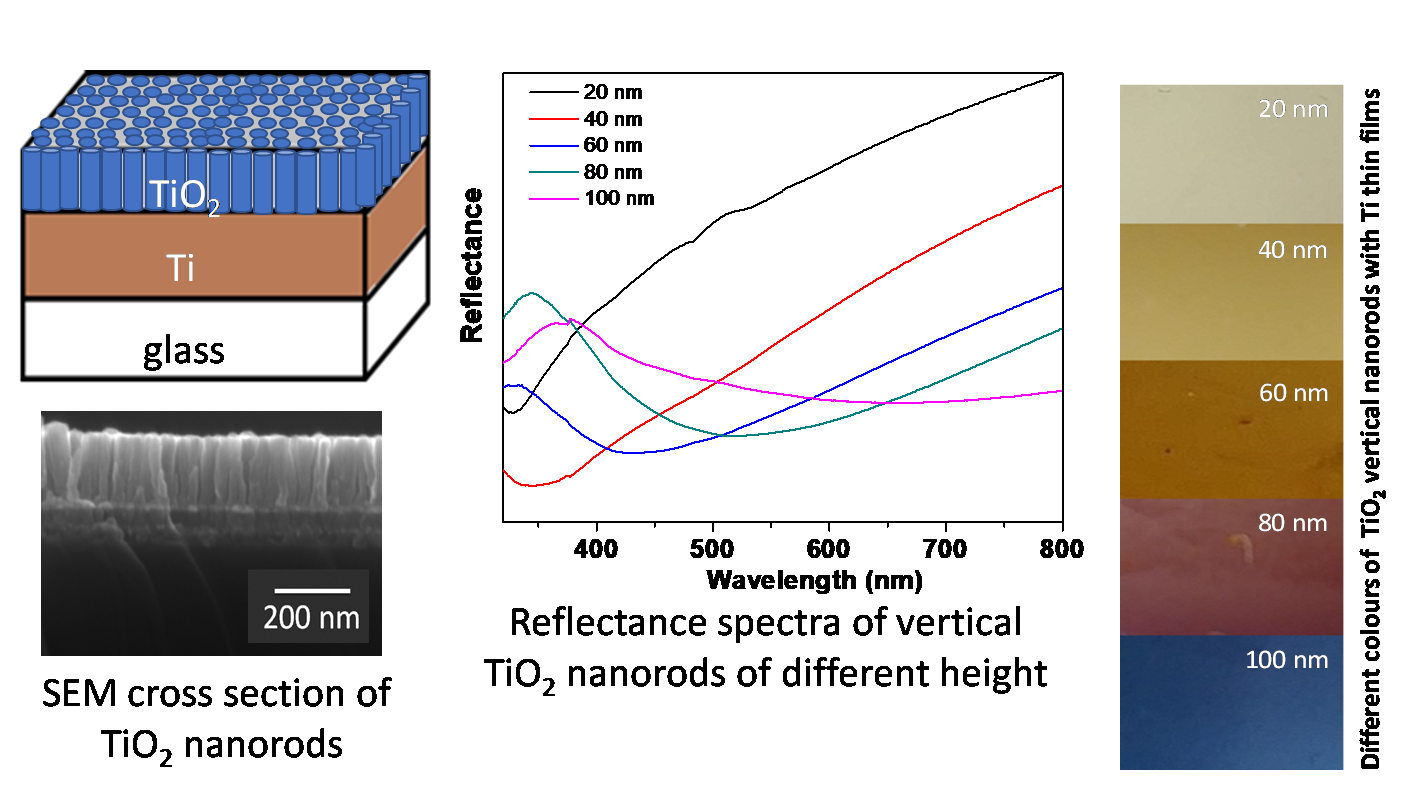Self-cleaning structural colors by TiO2/Ti nanostructures
Gaurav Shukla, S. Angappane
Applied Optics, 59, 10484 (2020) * Appeared in the cover page
Structural colors are fascinating due to their stability in comparison with dyes and pigments; nevertheless, environmental pollutants contaminate surfaces and redefine structural colors. To overcome this problem, cleaning of the surface is necessary at regular intervals, which is cumbersome and costly.We have circumvented this issue in this article and fabricated scalable self-cleaning structural colors. The structural colors are generated by TiO2 nanorods and thin films on Ti sputtered glass and flexible polyethylene terephthalate substrates employing a glancing angle deposition (GLAD) technique. Theoretical calculations based on thin film interference validate the experimental results and suggest Al, Ni, Co, and Cu as an alternative of Ti for generating structural colors. Structural colors are transformed to a superhydrophilic state, i.e., a self-cleaning state, via UV exposure and annealing at elevated temperatures. In addition to a self-cleaning state, annealing could control the opaqueness and color tunability of the structural colors. A permanent wettability state in between the superhydrophobic and superhydrophilic states of the structural colors is controlled by the GLAD technique. Moreover, the structural colors are demonstrated for information encryption and optical ethanol sensing applications.

